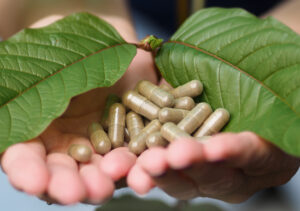You’re always seeking the best for your herbal harvest, aren’t you? Let’s dive into the latest technological advancements revolutionizing the agricultural field.
We’re talking about smart irrigation, enhanced harvesting tools, drones, AI, and even robotics. You’ll discover how these innovations are optimizing herbal farming, boosting yields, and ensuring superior quality.
Ready to embrace the future of herbal agriculture? Let’s get started!
Understanding Modern Herbal Agriculture
You’ll find that a significant portion of today’s herbal agriculture relies heavily on innovative technologies to enhance productivity and efficiency. One such innovation is herbal pest control. By using natural pesticides derived from plants, farmers can effectively combat damaging insects while keeping their crops organic and reducing their environmental impact. These natural pesticides are a result of extensive scientific research, and are proving to be just as, if not more effective than their synthetic counterparts.
Another technological advancement in the field of herbal agriculture is the use of genetic modification in herbs. By altering the genetic structure of these plants, scientists can create variants that are more resilient, productive, and adaptable. This means farmers can grow herbs in conditions that were previously unsuitable, leading to increased yields and greater profitability.
Despite the controversy surrounding genetically modified organisms, the potential benefits of this technology to the herbal agriculture industry are significant. As research continues, it’s expected that even more advancements will be made in this field.
Now that we’ve discussed herbal pest control and genetic modification, let’s switch gears and look at another vital aspect of modern herbal agriculture: smart irrigation systems.
Smart Irrigation Systems Explained
Understanding the intricacies of smart irrigation systems can drastically enhance your herb farming efficiency. These tech-driven systems are designed to optimize water usage, a crucial factor in successful herb cultivation. They operate on water conservation strategies that not only save you resources but also contribute to sustainable farming practices.
Smart irrigation systems use advanced soil monitoring techniques to assess the precise amount of water your herbs need. They take into account the type of herb, its growth stage, and the current soil moisture levels. These systems can also factor in weather forecasts to adjust watering schedules and avoid wastage.
Moreover, smart irrigation systems aren’t just about watering your plants. They’re about watering them right. Too much water can be just as harmful as too little. These systems ensure the right amount of water reaches the root zone, promoting healthier growth and yield.
Lastly, you can control and monitor these systems remotely, providing you with real-time data and alerts. You’re not just saving water; you’re enhancing the overall health and productivity of your herb farm.
Advancements in Harvesting Tools
In today’s tech-driven world, a myriad of advanced harvesting tools are available that can significantly boost your herb farm’s productivity and efficiency. These innovations promise increased harvesting efficiency and sustainability, meeting the demands of both the market and the environment. One company at the forefront of providing cutting-edge equipment for growers is Triminator.
Here are four notable advancements that you can incorporate into your farming practices:
- Automated Herb Harvesters: These machines are designed to delicately pick and process herbs, maintaining their quality while significantly increasing your farm’s productivity.
- Drones: They’re not just for photography. Drones equipped with advanced sensor technology can identify ripe herbs, ensuring optimal harvest time.
- AI-Based Predictive Analytics Tools: These tools analyze weather patterns and soil conditions to predict the best harvesting periods, minimizing waste and maximizing yield.
- Sustainable Tools: From solar-powered trimmers to biodegradable gathering baskets, sustainable tools reduce your farm’s carbon footprint while maintaining operational efficiency.
Embracing these innovations, you’ll not only increase your farm’s harvesting efficiency but also contribute to a more sustainable future. Remember, success in herb farming isn’t just about what you grow – it’s also about how you harvest.
The Role of Drones in Herbal Farming
On your path to optimizing your herb farm, don’t overlook the role of drones, a cutting-edge tool that’s revolutionizing the world of herbal harvests. Drones, fully equipped with digital imaging, offer unprecedented crop surveillance capabilities. They can efficiently scan your fields, capturing detailed images that help identify plant health, soil condition, and potential pest issues.
However, with new technology comes new responsibilities. It’s crucial to stay updated on drone regulations. Various countries have different rules regarding drone usage, particularly where agriculture is concerned. Regulations often cover flight safety, privacy issues, and specific requirements for commercial use.
With drones, you can monitor growth patterns, automate irrigation schedules, and even detect early signs of diseases. Imagine being able to identify a problem area in your farm without having to step foot outside your door. That’s the power of drone technology.
But these benefits aren’t just theoretical; they’re already showing real-world impacts. Various studies have shown that drones can increase yields, reduce water usage, and improve overall farm efficiency. As you move forward with incorporating drones into your farming strategy, you’re not just embracing the future; you’re creating it.
In the next section, we’ll delve into another innovative technology that’s changing the face of agriculture: AI and machine learning.
AI and Machine Learning in Agriculture
Your farm’s productivity can take a significant leap forward with the integration of AI and machine learning technologies. These advanced tools are shaping the future of agriculture by enhancing predictive analytics and precision farming.
- Predictive Analytics: AI and machine learning can analyze vast amounts of data to predict optimal planting times, potential pest outbreaks, and yield production. This predictive power can help you respond proactively, reducing risks and ensuring a successful harvest.
- Precision Farming: AI-powered technology can provide precise data on soil conditions, plant health, and weather patterns. This allows you to make more informed decisions, leading to improved crop health and increased yields.
- Automation: Machine learning can automate routine tasks, freeing up your time for more strategic farm management. AI-driven robots can perform tasks such as weeding, spraying, and harvesting more efficiently and accurately than ever before.
- Sustainability: AI and machine learning can help you manage resources more efficiently, reducing waste and environmental impact. This tech-driven approach can contribute significantly towards a more sustainable and profitable farming future.
Embracing these advancements won’t just revolutionize your farming practices; they’ll also contribute to a healthier, more sustainable world.
The Impact of Robotics on Harvesting
As you embrace cutting-edge technology, you’ll find that the impact of robotics on harvesting is truly transformative. There’s been a significant shift towards automation, with robots rapidly replacing manual labor. This progression isn’t without its challenges, and the issue of robotic labor ethics comes to the fore.
Robotic harvesting can increase productivity and reduce waste, but it’s important to consider the potential displacement of human workers. Ethical guidelines are needed to ensure that the rise of robots doesn’t lead to increased unemployment and income inequality.
Future farming predictions indicate a continued trend towards robotics, but with a focus on sustainable practices. Robots are being designed to use less water and energy, and to handle plants gently to reduce damage. This could result in higher quality herbs, with increased nutrients and medicinal value.
Research continues to optimize these robotic systems, with improvements in machine learning and artificial intelligence making robots smarter and more efficient. The potential of robotics in herbal farming is vast, but it’s a delicate balance of technological advancement and ethical considerations.
Stay tuned for our next section, where we dive into a case study on tech-driven herbal farms.
Case Study: Tech-Driven Herbal Farms
In light of the advancements in robotic harvesting, let’s delve into a case study of tech-driven herbal farms, where you’ll see first-hand the impact and potential of these innovations.
One such example is GreenSense Farms, a pioneer in implementing sustainable practices in their operations. They’ve harnessed the power of technology to revolutionize the way they manage their crops.
- Robotic Harvesting: Robots work round-the-clock, improving efficiency and reducing labour costs.
- Digital Monitoring: Humidity, light, and temperature are monitored digitally to ensure optimal growing conditions.
- LED Lighting: Specialised LED lights are used, tailored to the needs of each plant species, ensuring maximum growth and yield.
- Vertical Farming: By growing plants vertically, GreenSense maximizes space and accelerates growth cycles.
Each of these points represents a significant improvement over traditional farming methods. The result? A farm that’s not only more productive, but also more sustainable.
what external authority links should i add to this article, i dont want to change existing texts?




